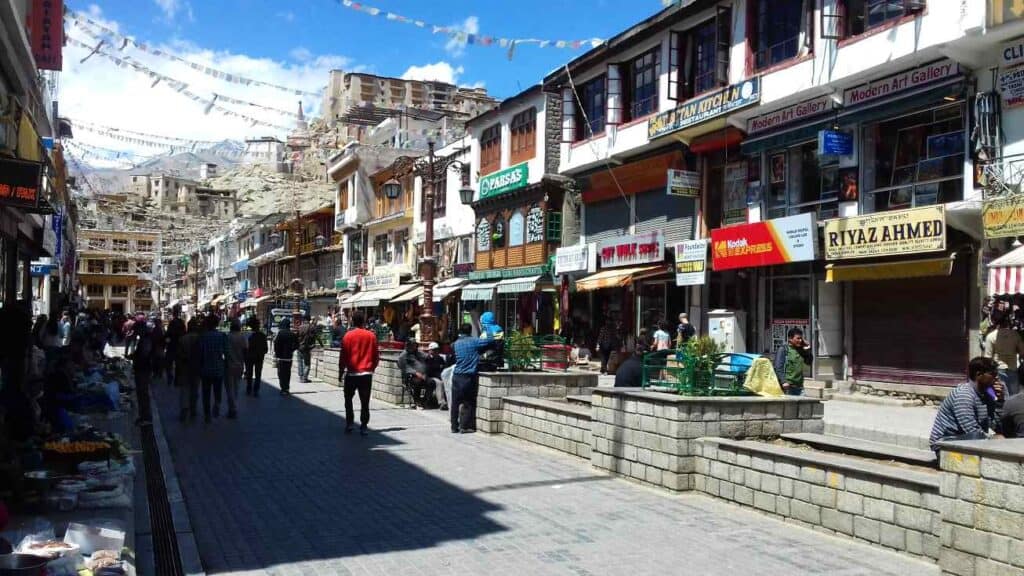Till 1974 Ladakh was closed for military reasons and became accessible for tourists only after. Unlike in other parts of India, most Ladakhi people are followers of Tibetan Buddhism mixed with tantric practices. There is a vast amount of monasteries clinging against the rocks. The lifestyle, the religion, and the Buddhist art in Ladakh are unique but hard to understand for first-time visitors. Ladakhis have several beliefs. And in addition, they must adapt to the harsh climate. This culture guide helps you understand the Ladakhi lifestyle and prepares you for the trip to Ladakh.
- What kind of place is Ladakh?
- Climate
- "Jullay"
- Where is Ladakh?
- Ladakhi people
- Semi-nomadic lifestyle
- Married life in Ladakh
- The famous turquoise in Ladakhi culture
- Birth of a child in Ladakh
- Death rituals in Ladakhi culture
- Religion
- The staple food of Ladakh
- Tibetans in Ladakh
- The impact of modernization on Tibetan Buddhism in Ladakh
What kind of place is Ladakh?
As the Delhi-Leh flight approaches the Himalaya ranges, green valleys pop up amid the barren mountains. The plane lands at the tiny airport of Leh, the capital of the north-Indian region, Ladakh. The first impression is so peaceful. After the hustle and bustle of Delhi, you can hardly believe that this sparsely populated nature wonder at the foot of the Himalayas also belongs to India.
Pin it for later!
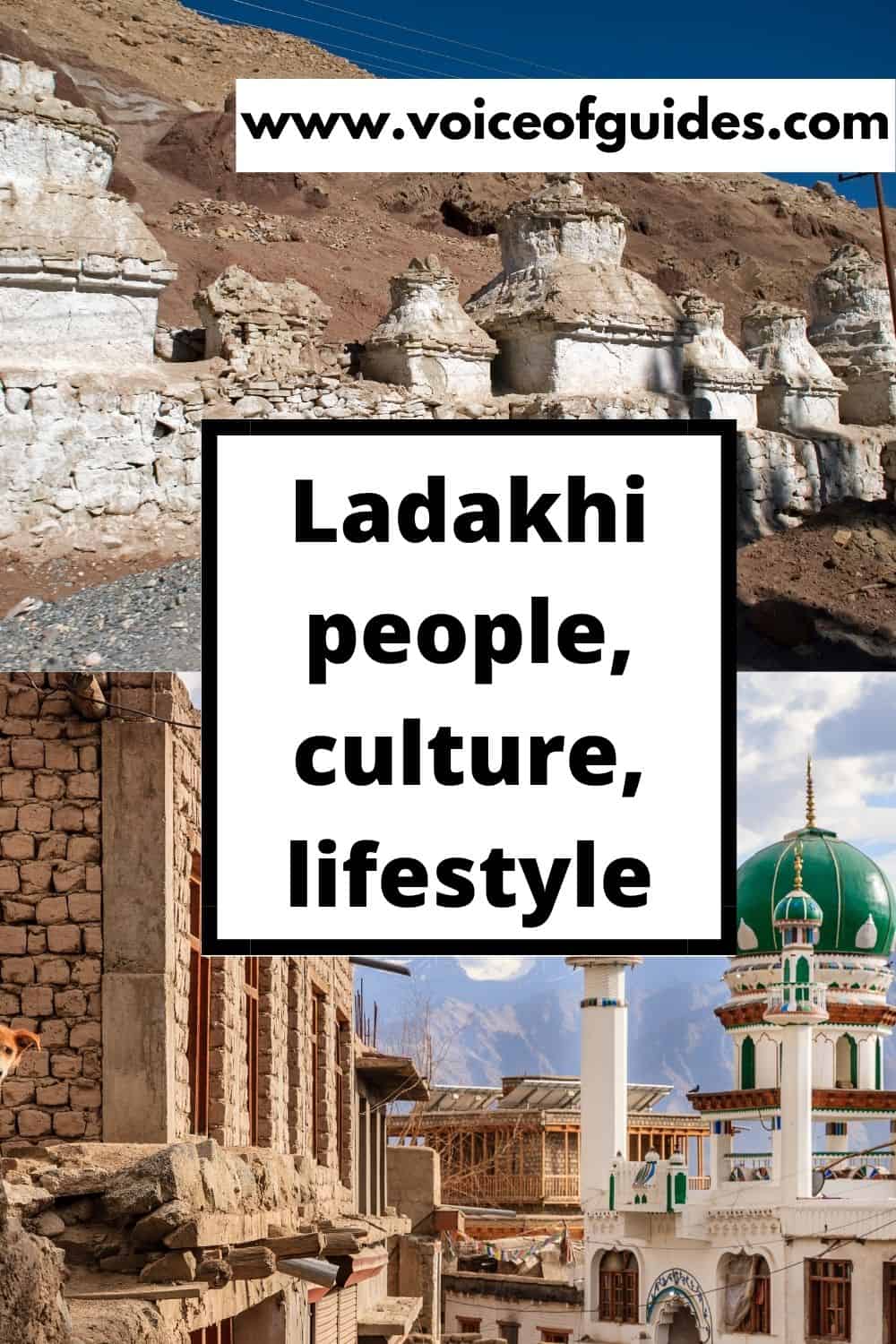
At 3500 meters, the air is fresh but thin. It is hard to climb even a couple of stairs, let alone running. Your heart beats faster than usual, but in one or two days, you get used to it. Everything feels so simple here: The lifestyle, the way of thinking. Spending some time in Ladakh in the pure beauty of nature equals a mental refreshment. Even Indians who have once been to Ladakh cannot stop talking about it. Domestic tourism saw rapid growth following the release of the Bollywood blockbuster, “The Three Idiots,” which features some of the best sceneries in Ladakh.
The best two-week Ladakh and Kashmir itinerary
The area encircled by high mountains has a distinct feature: It is dry as a desert. They capture the clouds from all directions, so there is hardly any rain in this area. This is why the landscape recalls the moon’s surface, hence its other name: “Moon land.” Some vegetation can be found only around the riverbanks in this barren landscape, while the human settlements lie at an altitude of at least 3100 meters. Young Ladakhis drive around with their 4×4 vehicles transporting the tourists. Good cars are vital on narrow mountain roads.
The countless monasteries and trekking are the main attractions of Ladakh.
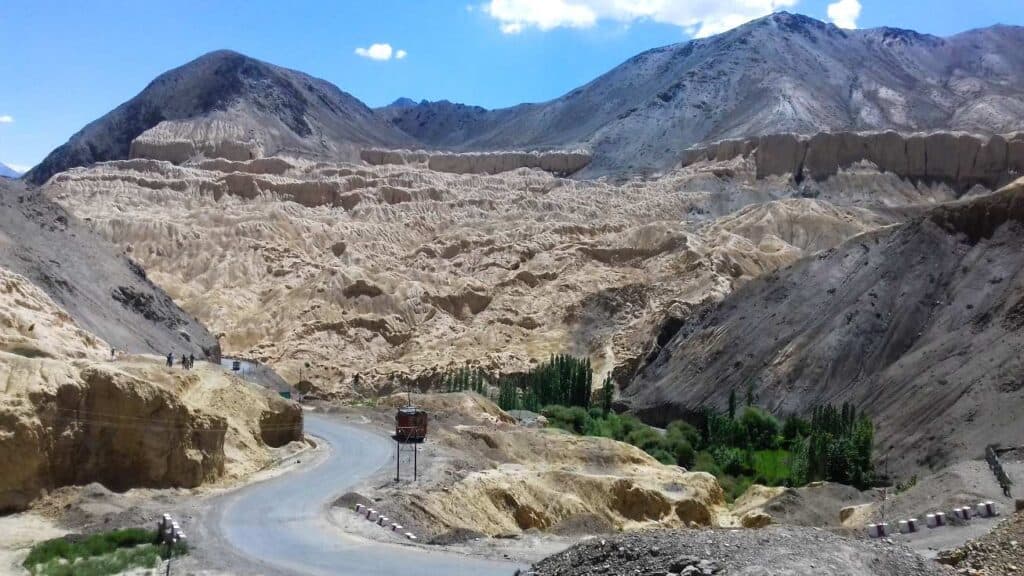
Climate
Ladakh has a harsh climate, and for almost eight months a year, the snow cuts it from the rest of India. Flights operate the entire year to Leh, but there are heavy snowfalls, and a temperature of -20 to -30 degrees is not rare either in winter. The Rohtang Pass is only open from March till October if you arrive from Manali. The Ladakhi tourism is limited to the period between May and October when the temperature is pleasant. However, some come in winter to complete the famous Chadar Trek on the frozen river.
Even in summer, mornings and evenings are fresh, and during the day, it can get chilly when the clouds block the sunshine.
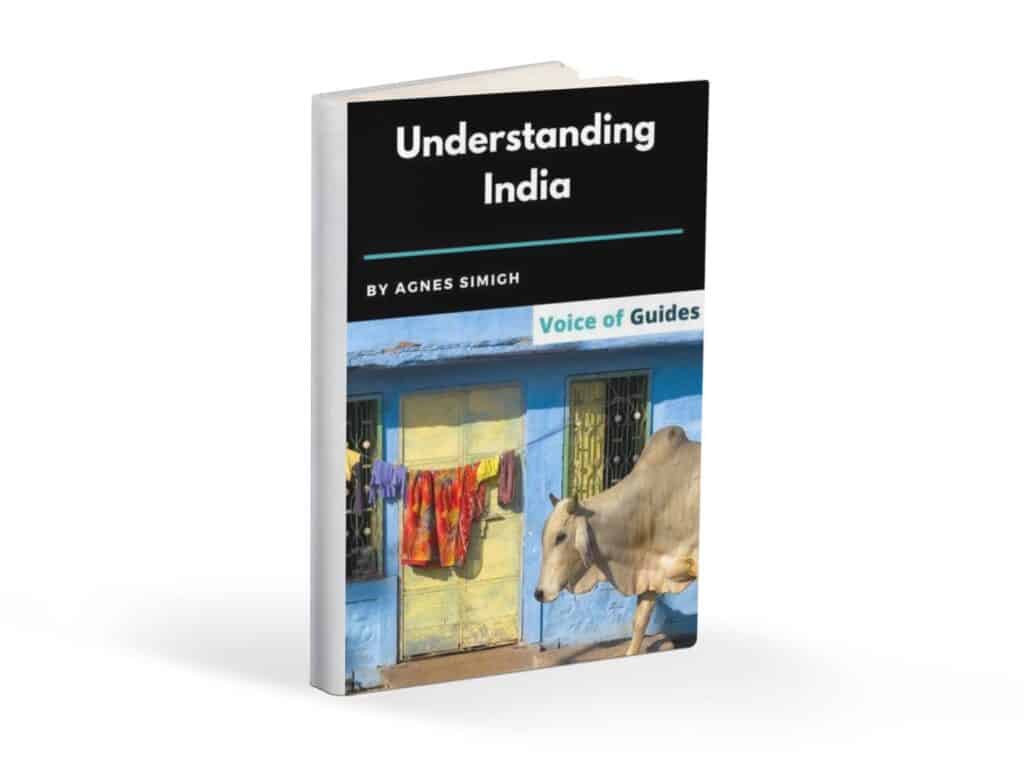
“Jullay”
This is how they greet each other in Ladakh. Jullay can mean anything: Hi, hello, thank you, or goodbye.
Where is Ladakh?
Since the independence of India, Ladakh has been part of the northernmost state, Jammu & Kashmir. The Great Himalaya and the Karakoram Range separate Ladakh from North India, Kashmir, and Central Asia. But to the east, there is no such clear border, and the mountains gradually transform into those belonging to Greater Tibet. That’s the reason why geographically and ethnographically, Ladakh belongs more to Tibet. As of October 2019, Ladakh became a so-called Union Territory governed directly by the Central Indian Government. It also got separated from Jammu & Kashmir, a decision very welcomed by the locals. But unlike J&K, Ladakh does not have a legislative assembly.
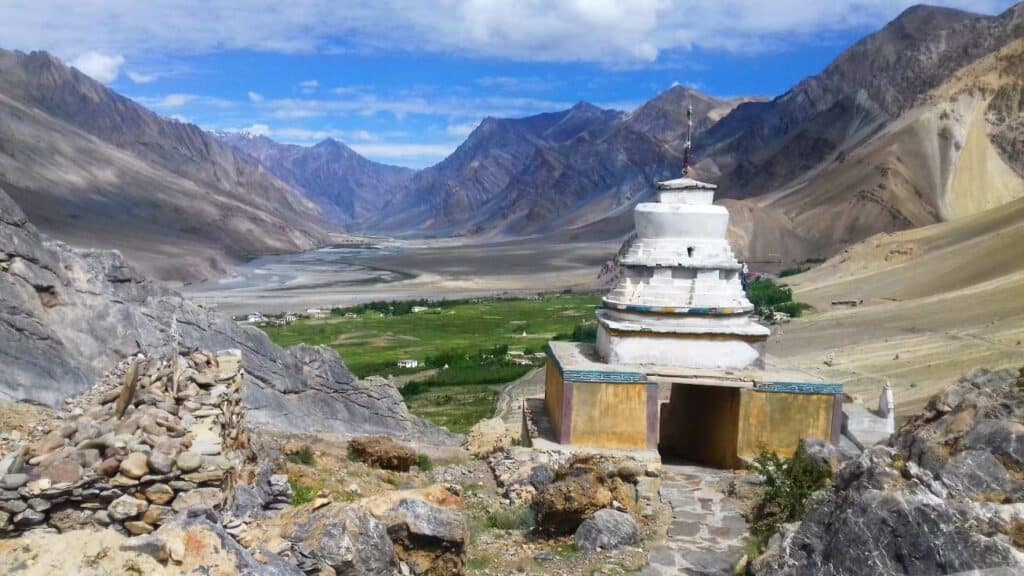
Ladakhi people
It is hard to survive under these harsh conditions. After a brief summer, the winter with -30 to -40 degrees will last almost eight months in Ladakh. Families retreat to their houses, care for the animals, do handicrafts, play cards, heat their bodies with plenty of meat and locally produced alcohol—the Chang. Chang is made of barley and is necessary to get through the harsh winters. Even some monks drink that. Ladakhi people only bathe once a week because of the extreme cold climate, but some even skip it for months.
The best two-week Ladakh and Kashmir itinerary
The 10 most famous monasteries in Ladakh
Semi-nomadic lifestyle
Ladakhi people mainly follow a semi-nomadic animal husbandry lifestyle and depend on agriculture. They produce what they need, sell the rest on the local market and try to recycle everything. The animals supply the farmers with meat, butter, and cheese. They carry goods, plow, and provide clothing that is warm enough to survive. Nomadic people collect the dung, have it dried, and use it for heating in place of firewood. This fertilizer is precious as in the lack of wood; it is the only way to set fire. So animal husbandry plays a central role.
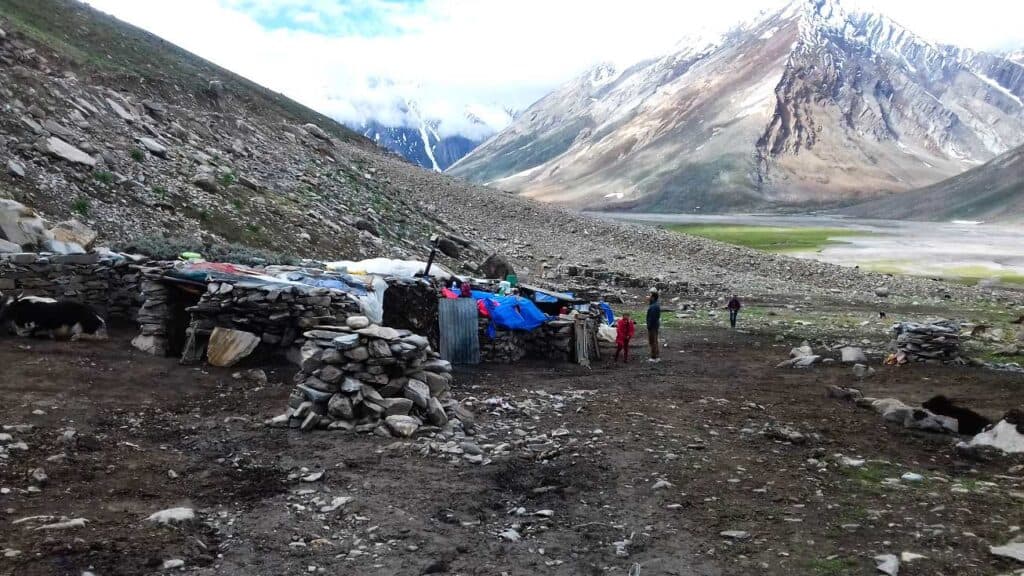
Ladakhis are practical people who know when to sow a field, how to conserve water, and judge the quality of a sheep or scarf. They are good-hearted, who would never cheat you, and live a simple life by facing many dangers and difficulties.
Because of modernization, the Ladakhi lifestyle is also changing, but there is still social equity so that nobody is far richer than his neighbor. They know they can only advance and survive by working together as a community. Building houses, working the land, and creating sewer systems are a mutual duty and interest.
Married life in Ladakh
The Ladakhi population stagnates under such hard living conditions, and polyandry was widespread earlier. Either a woman married two brothers, or a man married two sisters. The child considered both as fathers or mothers, although the “number one spouse” enjoyed priority in spending the nights together. Until a few decades ago, parents arranged marriages, but nowadays young people prefer choosing their spouse themselves. This form of polyandry still exists today, even if locals tend not to mention it to foreign visitors to avoid unpleasant remarks, but it is not common nowadays.
The best two-week Ladakh and Kashmir itinerary
After the engagement, the groom goes to his fiancée’s house with a large quantity of Chang to discuss the date of the marriage and other formalities. From this time on, he must send good food and Chang every day to his beloved. Twenty days later, the two families get together to witness the groom giving a present to his future mother-in-law. It can be money, ornaments, jewelry, or simply Chang. Two weeks later, they all meet again at the bride’s house and take her to the groom’s house, where a group of lamas (teachers of Tibetan Buddhism) is waiting to recite the wedding prayers. They celebrate, of course, with a festive meal and unlimited Chang that can take more than a week.
The famous turquoise in Ladakhi culture
Ladakhi women wear magnificent turquoise headdresses, known as “Perak” during festival time. Turquoise is a valuable typical stone of Ladakh, which brings good health and prosperity. It helps keep the evil spirits away. The Perak comprises several rows of small stones and can hang down till the back or even the waist. The best pieces are always on the top. The Perak is the symbol of wealth and status in Ladakhi culture. The biggest ones can weigh some kilos with hundreds of turquoise stones.
Birth of a child in Ladakh
When a child is born in Ladakh, people come to visit the mother and the newborn. Relatives bring food, clothes, or money. The mother traditionally stays at home for one month and ten days, but it is more flexible nowadays.
Only after one year, the child gets a name during a feast called Ming Ton. The lama comes to the house and gives the most appropriate name to the child.
Death rituals in Ladakhi culture
The last rituals depend on how wealthy the family is. If they can afford it, they invite several lamas to the house who pray every day for 15 days until the cremation. They never bury the corpses in Ladakh. The family has to cater to the lamas. Poorer Ladakhis invite maybe only one lama and for fewer days.
After the cremation, they collect the deceased’s ashes and mix them with clay to make an image of the person. They build a chorten to place the ashes under, together with other things like copper, silver, iron, gold, turquoise, wheat, rice, barley, sacred scripts, etc.
Wood is scarce in Ladakh, so they cremate the dead in a sitting position to spare the wood. The bodies may also be chopped into small pieces by professional body choppers and then fed to the dogs. It is called an Earth Funeral.
The Sky Burial is another method, when the bones are cleaned of flesh, which gets smashed into a paste, mixed with corn, and fed to the vultures. It is considered the best way to reach the heavens.
According to Tibetan Buddhism, after death, the soul gets into an intermediate state (bardo) between life and death for 49 days before reincarnation.
Religion
Most of the population are followers of Tibetan Buddhism and the monasteries are still the centers of Ladakhi life. But they weaken as they get less support, and the monks are also losing discipline. Only little funds are attributed to preserving the monasteries and the Ladakhi language.
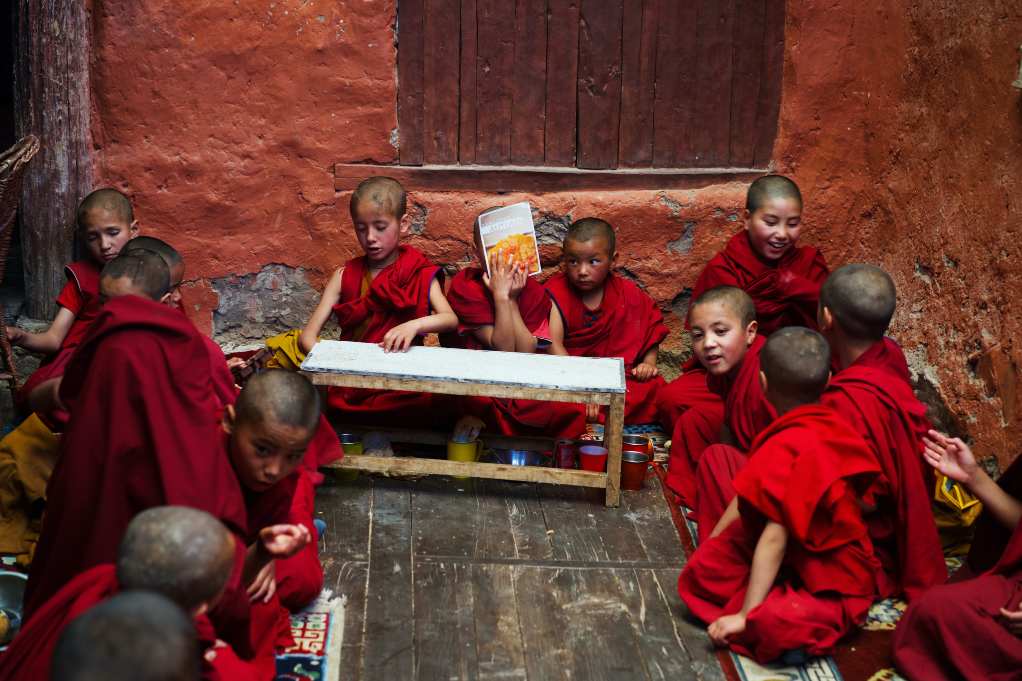
The Ladakhis are all spiritually linked to a Rinpoche, a head lama. They turn to their Rinpoche when they have family disputes, argue over fields, or when they are sick. It is the Rinpoche who will decide on the children’s name as well.
Oracles are also respected. They can cure diseases and even suck the devil from the possessed. They do all that in the state of hysterical transformation when they can also be quite violent.
The staple food of Ladakh
Tsampa and Chang are the most well-known Ladakh brands.
Chang: homemade barley wine, the most typical drink of Ladakh.
Tsampa: the Tibetan staple food. The roasted barley flour mixed with butter tea is made into a sort of porridge.
Thukpa: A staple soup with vegetables and noodles made of wheat or barley flour. They can also add chicken, yak, and mutton.
Momos: These are fried or boiled dumplings filled with minced meat, spinach, potato, cabbage, carrots, or onions.
Skyu: A soup-based stew made with potato.
Tingmo: steamed Tibetan bread without filling that they usually eat with dal, cooked vegetables, or meat.
Chutagi: a famous pasta-like dish with a rich vegetable-based sauce. It is one of the most famous dishes that you can find in every local restaurant in Leh. Each one has its secret Chutagi recipe. “Chu” means “water” in Ladakhi, and “tagi” means “bread.” Therefore, the literal translation of “Chutagi” is “water-bread.”
Chhurpi (Yak cheese): Another stable food in the Himalayas is the hard yak cheese.
Khambir: the most famous local bread
Apricot jam: The valleys in Ladakh are abundant in apricot trees, and the apricot jams and juices are incredibly delicious.
Tibetans in Ladakh
China closed the Ladakh-Tibet border and keeps it under strict control to prevent Tibetans from escaping to India. Thousands of Tibetan refugees live in Ladakh, who were stateless till 2017. Before 2017, they only possessed an Identity Certificate. If they wanted to travel abroad, they had to go to the capital Delhi for approval first and have their papers stamped upon return.
The best two-week Ladakh and Kashmir itinerary
Then, the government offered Indian passports for those born between 1950 and 1987 in India. But many refuse because if they accept Indian citizenship, they lose the right to fight for Tibetan independence. Besides, young Tibetans often immigrate to Western countries for better living standards. It means that until they accept the passport, Tibetans in Ladakh cannot enjoy the same rights as Indian citizens. They cannot buy land or property, and bank loans are often not granted to them.
However, Tibetans living here and in other parts of India play an important role in preserving the Tibetan language and culture that the Chinese government tries to erase.
The impact of modernization on Tibetan Buddhism in Ladakh
When Ladakh opened to the outside world in the 1970s, they also constructed an airport and roads. Thus, the previously entirely self-sufficient, secluded areas also gained access to commercial products and achievements. They lived backward for so long and now had to join the “real world.” But what would be the price of this “Westernization”?
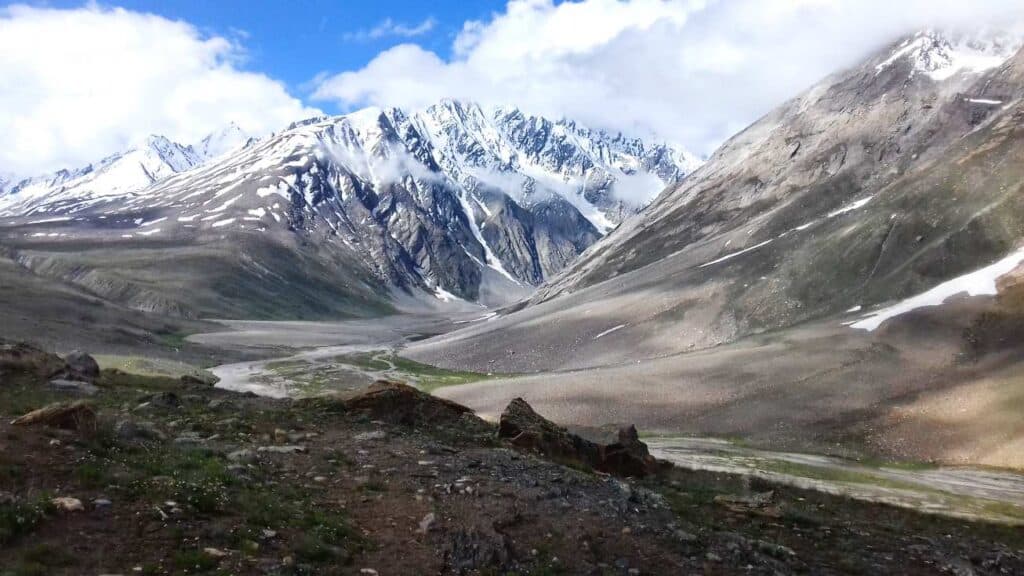
Young people wear modern sports shoes nowadays instead of animal fur items. Buddhist monasteries receive less financial support, and children go to the public instead of monastery schools. The young generation does not long for this demanding lifestyle their parents pursued. Before, every family wanted to send their children to be Buddhist monks. Now they want them to become tourist guides.
The Indo-Pakistan conflict as of 1947 and the interethnic conflicts in the Kashmir valley in 1989 set back the tourism and trade revenues in the Kashmir region.
In the hope for better livelihood, Muslim traders moved from Kashmir to Ladakh, which offered better chances as a more popular touristic destination. Thus, an increasing number of Muslims appeared in what used to be an almost entirely Buddhist area. Kargil city has turned into an almost pure Muslim city in the Buddhist region. The merchants brought cheap goods to the region, and the monks sometimes paid with prayer flags when they did not have money, destroying valuable religious relics. Nowadays, the muezzin calls for prayer in Leh. Buddhists and Muslims live together, a series of hotels opened, and previously unknown pollution damages the environment.
Indeed, the people of Ladakh live an enviably idyllic life. So no wonder that the first Tibetologists called Ladakh the last Shangri-la, the perfect paradise for the Tibetan desires. But the Buddhist traditions are in danger, and the once remote place becomes a popular travel destination. To enjoy the authenticity of Ladakhi culture, you better visit it as soon as possible.
Useful resources for your travel to India
Insurance: Safetywing insurance that covers COVID-related issues as well.
Train, bus and flight ticket: Book your train ticket at Indian Railways website, or 12Go which gives you the best option (train, bus, and flight) based on the city of departure or arrival.
For your flight ticket use Google Flights.
Accommodation: Booking.com and Hostelworld.com offer a wide choice of low and higher-budget hotels.
Local tours and tour packages: Viator and GetYourGuide offer transfers and several one or multi-day tours.

